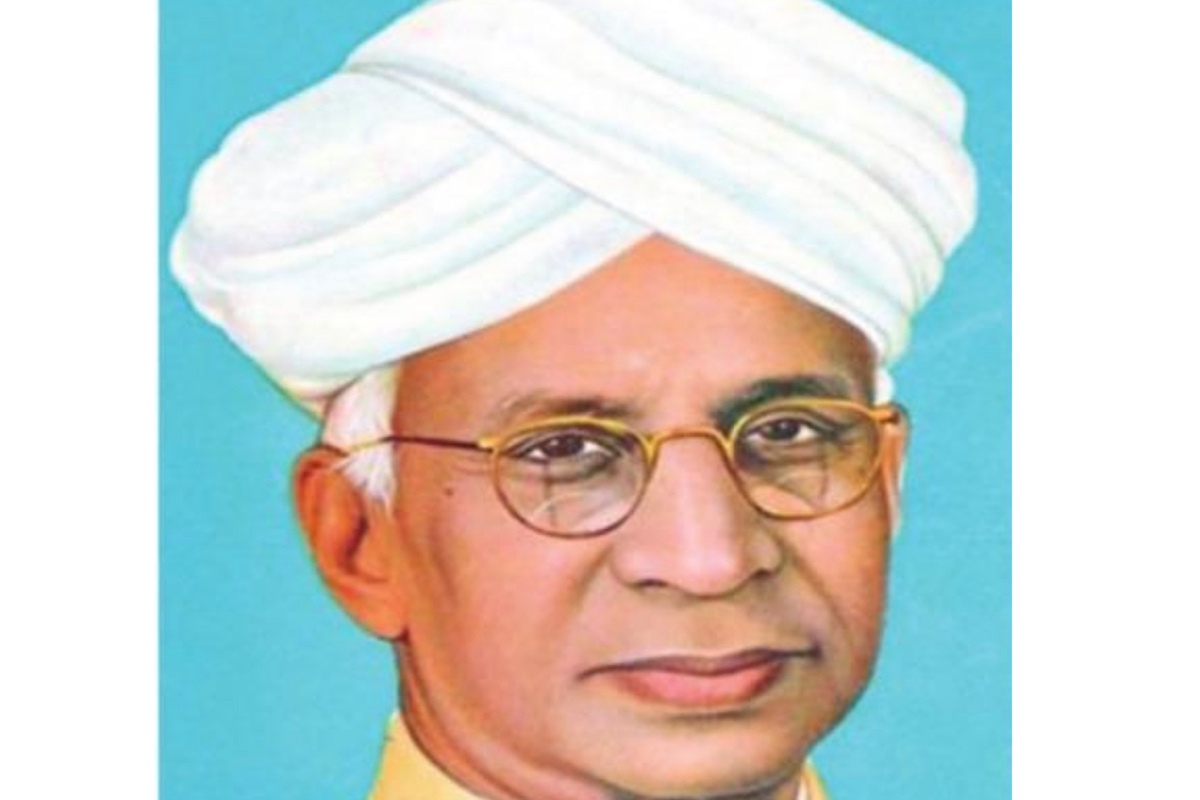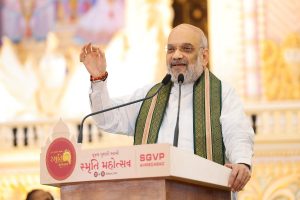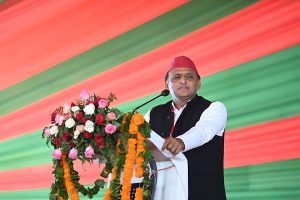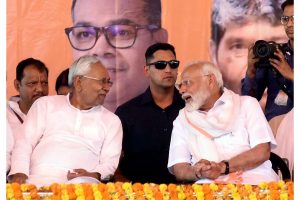When Dr S Radhakrishnan was invited in 1926 to Manchester College, Oxford to deliver the Upton lectures, he was already a renowned professor of philosophy at Calcutta University. As a teacher, he was demonstrating his ability to simplify complex issues of western and Indian philosophy; making the subject inspiring, interesting for students and lay people who wanted to uplift their lives.
“The world is now full of racial, cultural and religious misunderstandings,” he said, referring to the end of the First World War, the millions who had died in Europe, Africa and Asia, and the anti colonial upsurge in the 1920s shaking up the British Empire. “We are groping in a timid and tentative way for some device which would save us from our suicidal conflicts. Perhaps the Hindu way of approach to the problem of religious conflicts may not be without its lessons for us,” he advised the august audience.
Dr Radhakrishnan questioned at the start, “How was Hindu society built up out of material so diverse, so little susceptible in many cases to assimilation, and scattered across a huge continent measuring nearly two thousand miles from north to south and eighteen hundred miles from west to east? It cannot be denied that in a few centuries the spirit of cultural unity spread through a large part of the land, and racial stocks of varying levels of culture became steeped in a common atmosphere. The differences among the sects of the Hindus are more or less on the surface, and the Hindus as such remain a distinct cultural unit, with a common history, a common literature and a common civilisation.”
The professor, in his soft yet firm voice, confessed, “In this task of welding together hetero- geneous elements and enabling them to live in peace and order, Hinduism has had to adopt her own measures with little or no historic wisdom to guide and support her.”
His explanation of the Hindu religion, and what it means to its followers, revealed his spir- itual and intellectual depth. Dr Radhakrishnan said, “The Hindu attitude to religion is interesting. While fixed intellectual beliefs mark off one religion from another, Hinduism sets itself no such limits.
Intellect is subordinated to intuition, dogma to experience, outer expression to inward realisation. Religion is not the acceptance of academic abstractions or the celebration of ceremonies, but a kind of life or experience. It is insight into the nature of reality (darsana), or experience of reality (anubhava).”
Both western and Indian philosophy have grappled with subjects of reality and divinity, the self and personality, ethics and morality for millennia. In his lecture, later published as ‘The Hindu View of Life’ in 1927, Dr Radhakrishnan explained the nuances of religious experiences. He said, “This experience is not an emotional thrill, or a subjective fancy, but is the response of the whole personality, the integrated self to the central reality. Religion is a specific attitude of the self, itself and no other, though it is mixed up generally with intellectual views, aesthetic forms, and moral valuations.”
When he said that relipgious experience is of “a self-certifying character”, he was in effect sharing one of the spiritual facets of Hinduism to a largely foreign audience. “It is svatassiddha. It carries its own credentials. But the religious seer is compelled to justify his in most convictions in a way that satisfies the thought of the age. If there is not this intellectual confirmation, the seer’s attitude is one of trust. Religion rests on faith in this sense of the term.” Faith and belief are contentious subjects for the modern mind. Dr Radhakrishnan’s words are a soothing balm for ruffled minds that could be going round in circles. “If we take faith in the proper sense of trust or spiritual conviction, religion is faith or intuition. We call it faith simply because spiritual perception, like other kinds of perception, is liable to error and requires the testing processes of logical thought.
But, like all perception, religious intuition is that which thought has to start from and to which it has to return. In order to be able to say that religious experience reveals reality, in order to be able to transform religious certitude into logical certainty, we are obliged to give an intellectual account of the experience. Hindu thought has no mistrust of reason. There can be no final breach between the two powers of the human mind, reason and intuition. Beliefs that foster and promote the spiritual life of the soul must be in accordance with the nature and the laws of the world of reality with which it is their aim to bring us into harmony.” He explained it further, “The chief sacred scriptures of the Hindus, the Vedas, register the intuitions of the perfected souls. They are not so much dogmatic dicta as transcripts from life.
They record the spiritual experiences of souls strongly endowed with the sense for reality. They are held to be authoritative on the ground that they express the experiences of the experts in the field of religion.” Not just as a philosopher or teacher, the patriot in Dr Radhakrishnan had realized the signifi- cance and value of one’s heritage. He said, “It is essential to every religion that its heritage should be treated as sacred. A society which puts a halo of sanctity round its tradition gains an inestimable advantage of power and permanence.
“The Vedic tradition became surrounded with sanctity, and so helped to transmit cul- ture and ensure the continuity of civilisation. The sacred scriptures make the life of the spirit real even to those who are incapable of insight,” he underlined these foundations of our civilization. “Men, in the rough and tumble of life with their problems and perplexities, sins and sorrows, have no patience for balanced arguments or sustained meditation, but they want some formula or rule of life which they can accept as valid. Through it, they are inducted into a new way of life. A living tradition influences our inner faculties, humanises our nature and lifts us to a higher level.”
Where is the scope of change, one may question. He said, “the dialectic of religious advance through tradition, logic and life helps the conservation of Hinduism by providing scope for change. Religion and philos- ophy, life and thought, the prac tical and the theoretical, to use the language of Croce, form the eternal rhythm of the spirit. We rise from life to thought and return from thought to life in a progressive enrichment which is the attainment of ever higher levels of Reality.”
Highlighting tradition, in the context of religion, Dr Radhakrishnan said, “tradition is something which is for ever being worked out anew and re-created by the free activity of its followers. What is built for ever is for ever building. If a tradition does not grow, it only means that its followers have become spiritually dead. Throughout the history of Hinduism, the leaders of thought and practice have been continually busy experimenting with new forms, developing new ideals to suit new conditions. The first impulse of progress came when the Vedic Aryans came into contact with the native tribes. A similar impulse contributed to the protestant movements of Jainism and Buddhism when the Aryans moved out into the Gangetic valley. Contact with the highly civilised Dravidians led to the transformation of Vedism into a theistic religion.”
Looking back over last five centuries, the professor said, “reform movements of Ramananda, Caitanya, Kabir, and Nanak show the stimulus of Islam. The Brahmo Samaj and the Arya Samaj are outcome of contact with Western influences, and yet Hinduism is not to be dismissed as a mere flow and strife of opinions, for it represents a steady growth of insight, since every form of Hinduism and every stage of its growth is related to the common back- ground of the Vedanta. Though Hindu religious thought has traversed many revolutions and made great conquests, the es- sential ideas have continued the same for four or five millenniums. The germinal conceptions are contained in the Vedanta standard.”
Dr Radhakrishnan’s ability to join the dots for clarity and understanding by the audience is evident when he explained, “the three prasthanas of the Vedanta, the Upanishads, the Brahma Sutra and the Bhagavadgita answer roughly to the three stages of faith, knowledge and discipline. The Upanishads embody experiences of the sages. Logic and discipline are present in them, though they are not chief characteristics of those texts. The Brahma Sutra attempts to interpret in logical terms chief conclusions of the Upanishads. The Bhagavadgita is primarily a yoga sastra giving us the chief means by which we can attain the truly religious life. They form together the absolute standard for the Hindu religion.”
“It is said that other scriptures sink into silence when the Vedanta appears, even as foxes do not raise their voices in the forest when the lion appears,” he said, adding, “all sects of Hinduism attempt to interpret the Vedanta texts in accordance with their own religious views. Vedanta is not a religion, but religion itself in its most universal and deepest significance.” On the eve of Teachers’ Day, we pay our deepest respects to Dr S Radhakrishnan, a teacher of teachers.
(The writer is a researcher writer on history and heritage issues, and a former deputy curator of Pradhanmantri Sangrahalaya)











